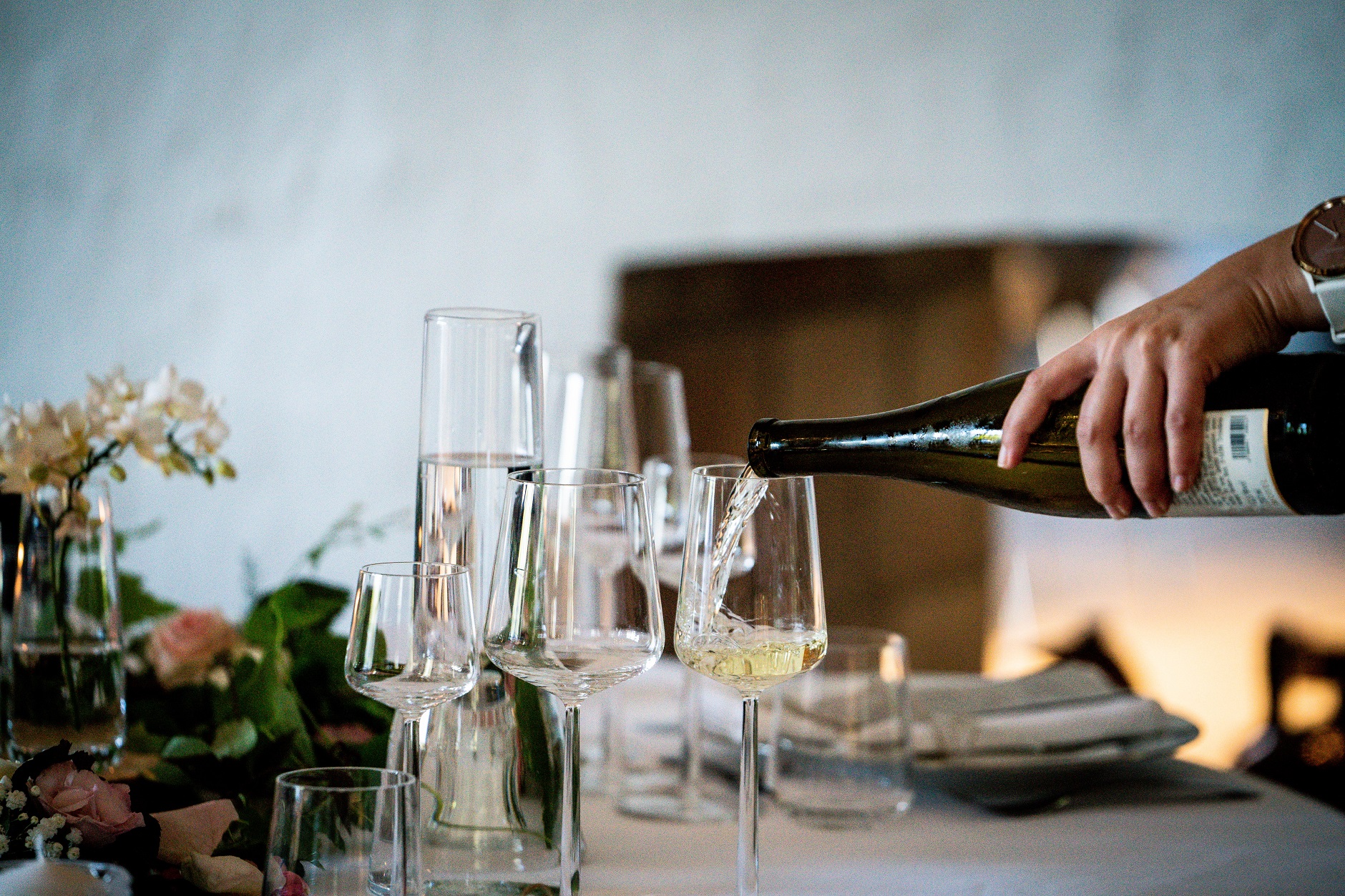We know you like making toasts and that you never back down when it comes to opening a good wine, but ... are you sure you have the right glasses? Drinking well means paying attention to this too: every wine has its glass for a good reason! Let's look together at how to choose the right glass: it is important to use the most suitable glass for the wine you open, and to know how many types of wine glass there are (many, you'll see!).
Wine glasses: why it is important to choose the right one
It may seem a minor detail, but it is not: a glass can tell you many things about the wine even before tasting, that's why the shape of the glass is so important.
Let's take, for example, the iconic gesture of swirling the glass (so dear to sommeliers and wine lovers from all over the world): this is not done just to make a flourish, rather it is essential to oxygenate wines which have remained closed in a bottle for a long time. For example, a nice structured red like AMARONE DELLA VALPOLICELLA DOCG should be allowed to breathe before it is tasted: try it in the right glass, and you will feel the difference!
For a young wine, or a fresh and delicate white such as the BIANCO VENETO IGT CA 'MERLETTO, a smaller glass which pushes the scent towards the nose is fine: delicate aromas must not be allowed to disperse in a large glass that would aerate the liquid a lot.
Finally, when you pour a wine into the right glass, you can fully appreciate the wine's colour and, with sparkling wine, its perlage too. It is no coincidence that, for example, sparkling wine flutes are so narrow and tall: it is a pleasure to see all those bubbles rushing upwards, it immediately gives a sense of joy and celebration. Imagine tasting a nice fresh RIBOLLA GIALLO in a too-large glass: it would immediately become a memorable toast, but not for the right reasons! Don't worry, we will soon go into detail about all the types of wine glasses and everything will be much clearer to you.
In the meantime, whatever toast you have planned will be more lovely and will look more professional if you choose the right glass. You will also fully enjoy the wine you uncork with all its peculiarities. Choose the right glass!
Wine glasses: their fundamental characteristics
If you are a wine lover you may already know it is very important to use the right terms when talking about wine. It is also important to know the parts of a wine glass well: here you will find a short and useful explanation of the characteristics a wine glass has.
- The lip is the highest part of the glass, the part from which the wine is drunk; it can have a more or less wide opening.
- The bowl, is the part that contains the wine: as we said before, it can be larger or smaller depending on the wine you are drinking.
- The stem is the central part, it renders the glass more slender and elegant, but it also has a very practical function: holding the glass by the stem preserves the temperature of the wine (holding the glass by the bowl would warm the wine with heat from the hand)
- Finally, the foot is the flat part that allows us to put the glass down. However, it is also an excellent point from which to grasp the glass (as you will often see done by expert sommeliers).
Wine glasses: all they types for your table
Now that you know all the parts of a wine glass, we can delve into the fascinating world of glassware for tasting: here are all the types of wine glass with their characteristics and some suggestions on their use. You're curious, right?
- The Ballon is a very popular and appealing wine glass: it is round, low, and very large. This glass is designed for the wine to be swirled around to oxygenate well and bring forth all of its scents. It is ideal for structured and low tannic red wines.
- The Bordeaux glass is pot-bellied and wide, and often has a long stem. The Bordeaux is excellent for tasting reds such as Cabernet Sauvignon or Brunello because the wine can decant further inside the glass, releasing all its “hidden aromas”.
- The Gran Cru (or Bourgogne) is the widest of the glasses (and, let's face it, a little bulky to keep in the kitchen). It can have a straight or open lip and, thanks to this characteristic and its width, this glass favours the diffusion of aromas: it is ideal for tasting a good Barolo or a Pinot Noir.
- The Renano, which may sound familiar to you, has a large bowl and a narrow lip to allow you to perceive the tertiary aromas produced by the ageing of the wine. This is why it is ideal for structured whites such as the Sauvignon or Riesling.
- The tulip is a classic that should never be missing from your glassware (maybe even just six, but it's always better to have them). Its flared lip, wider than the bowl, makes it perfect for young and fresh white wines, such as Chardonnay or Verdicchio.
- The flûte, so called because its shape resembles that of the flute, has a narrow and elongated shape to limit as much as possible the space in which you pour the wine. As it is a glass for sparkling wines, it would be a shame to disperse all that cheerful perlage due to excessive oxygenation, don't you think?
- The Coppa d’Asti (known simply as a cup) immediately brings to mind the toasts in the Great Gatsby: it has a semi-spherical and flattened bowl that ends in a very wide opening and has a truly retro charm. It is the perfect glass for Moscato d'Asti or for sweet and aromatic sparkling wines because its shape makes the more intense aromas less "pesky".
Now that you know all the secrets to choosing the right glass, all you have to do is taste some of Giordano's special labels: let yourself be inspired and choose the wine you prefer to enjoy with friends. It really is time to say "raise your glasses"!
 Free Delivery from 69£
Free Delivery from 69£
